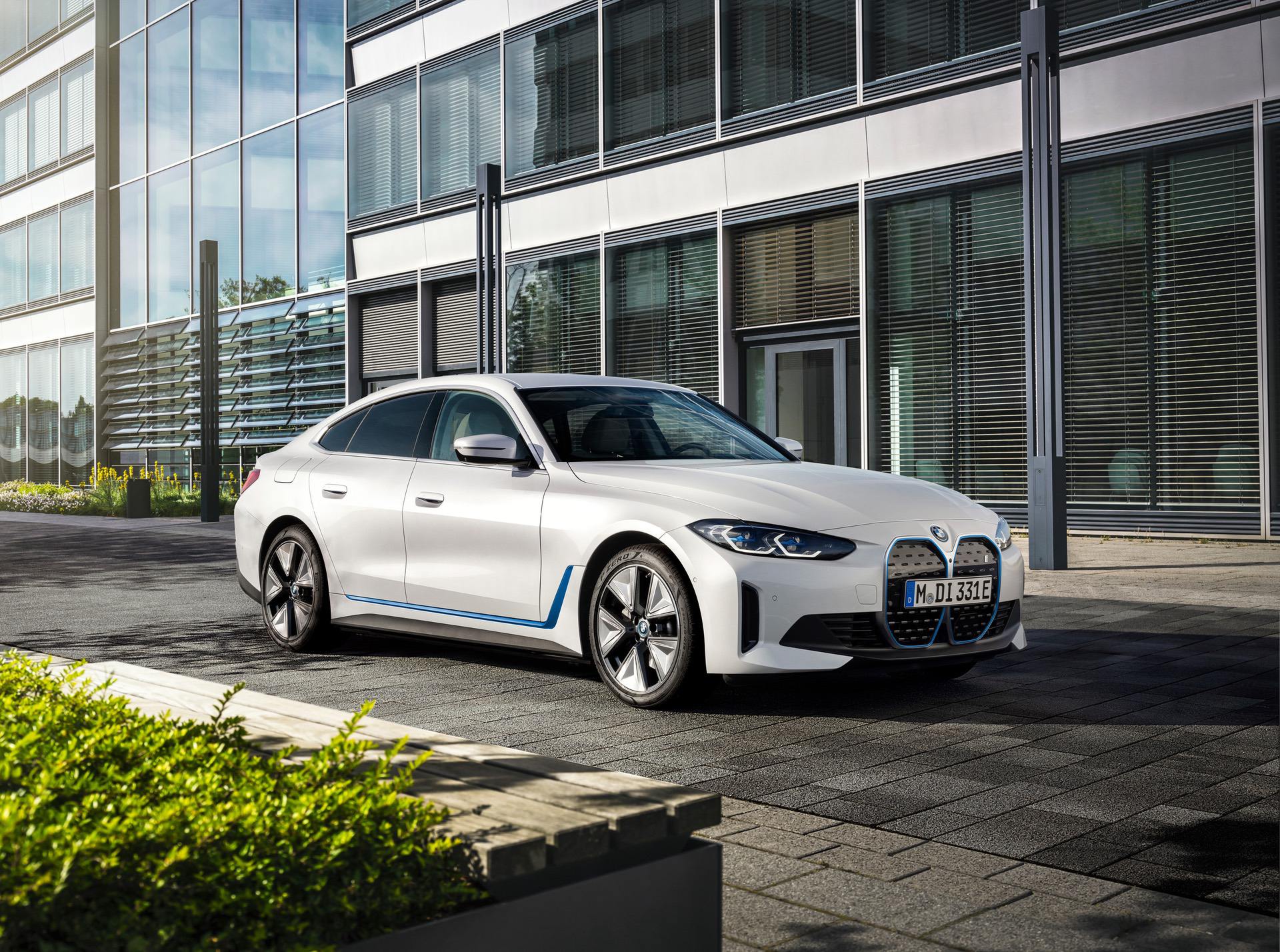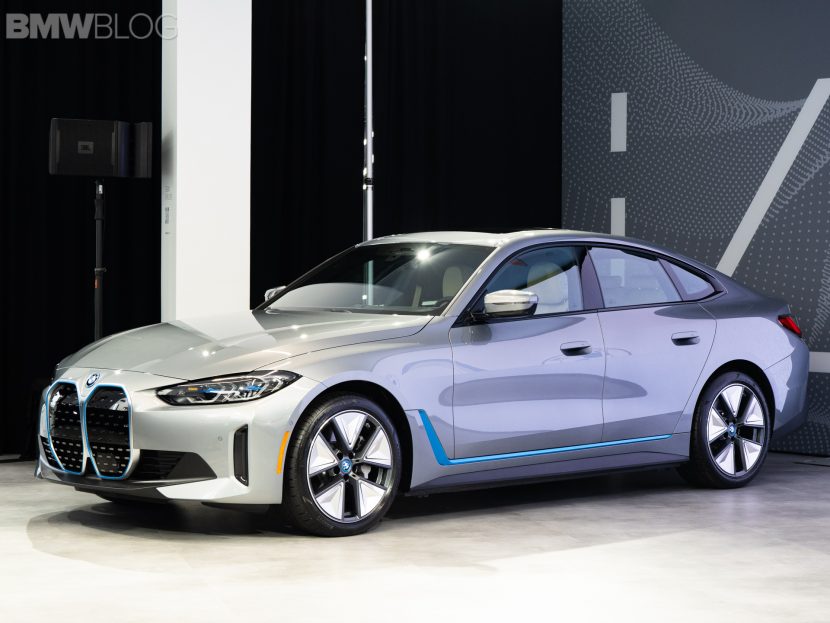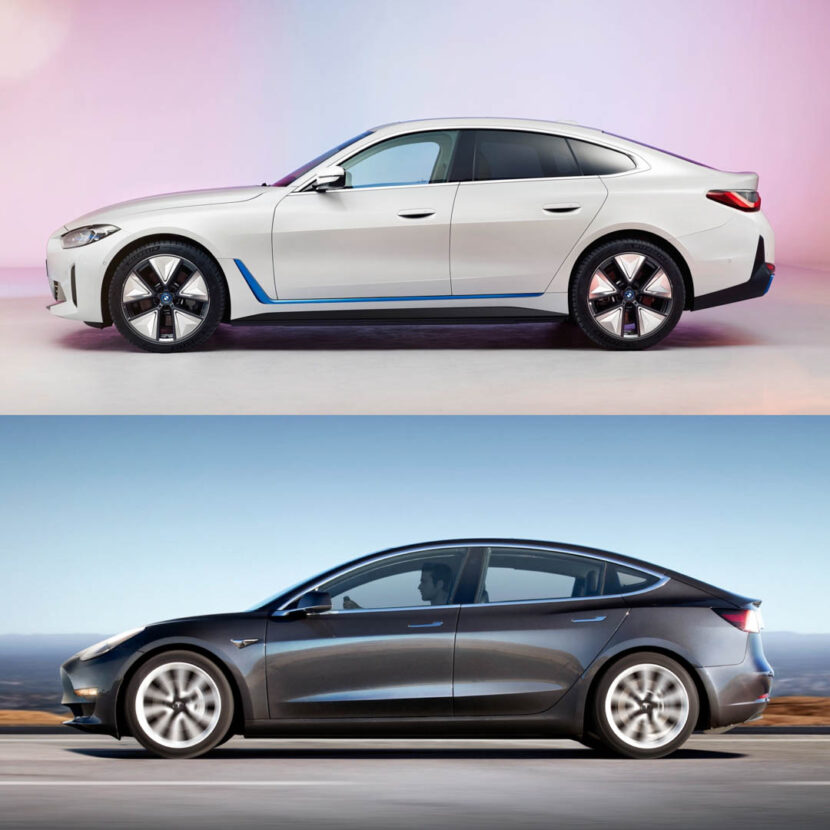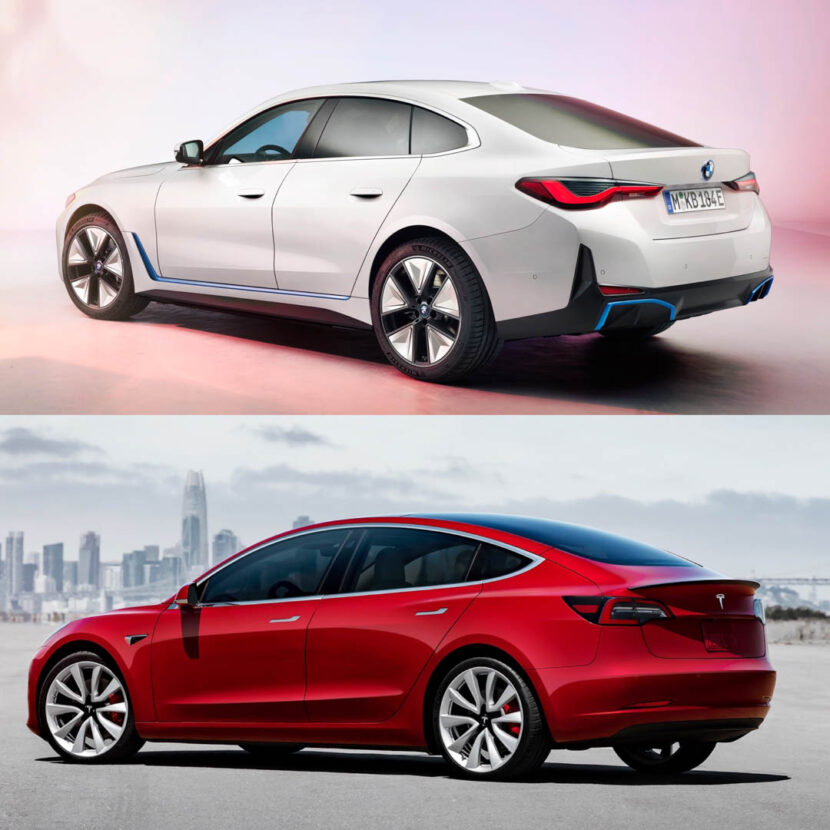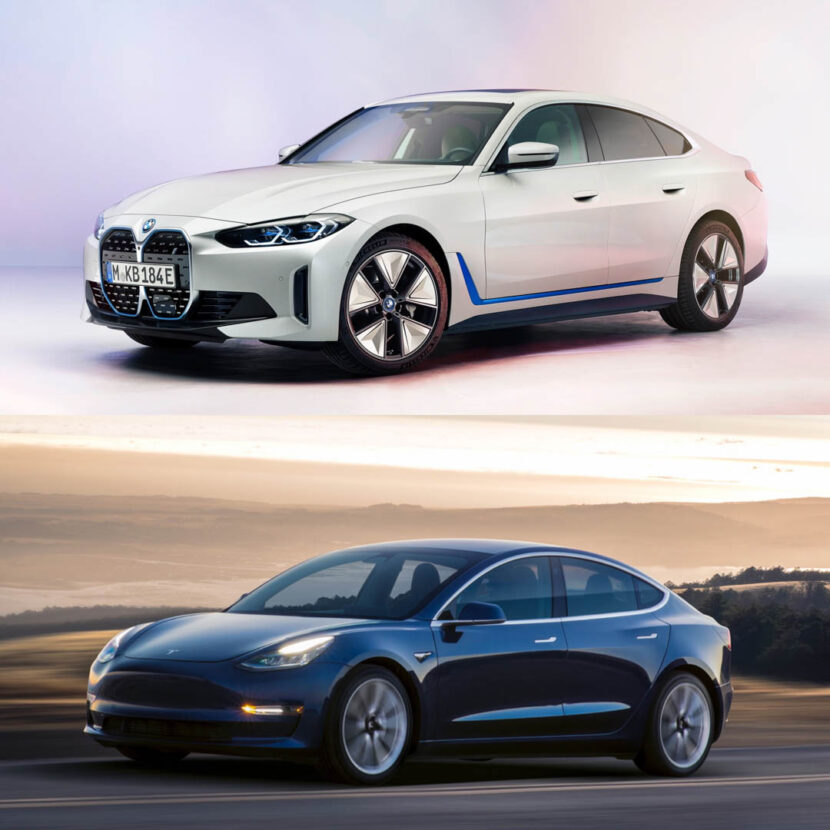Not all cars are created equal. It’s easier to stare at the headline specs and figures of each car and make a determination about which is better. However, context matters more than just the raw numbers. One of the most important figures for electric cars is weight, as the weight of an EV plays a huge factor into its efficiency, range, and performance. However, how that weight is added to the car can make a difference on its overall driving experience. So let’s take a look at the all-new BMW i4 and its curb weight, next to the Tesla Model 3.
How Are Cars Weighed?
Before we get into specifics, though, it’s important to understand how certain brands, in certain countries weigh their cars. For instance, the DIN (Deutsches Institut für Normung, the German institute for standardization) weight that German manufacturers use accounts for each vehicle to have topped-off fluids but only 90-percent of its fuel tank filled. While the fuel doesn’t apply to electric cars, there are still cooling fluids and washer fluids that add weight to the vehicle. There’s also the EU kerb weight rating, which adds an additional 75 kg to DIN, to account for a driver and an arbitrary amount of luggage.
In America, our curb weight ratings are funny. They’re supposed to be weighed with fluids topped off, fuel at 100-percent, and with the options that more than 33 percent of customers are expected to choose. So it can be a bit inaccurate, especially on brand-new vehicles with no precedent of customer option choice. Also, some manufacturers include a driver, some do not.
BMW i4 vs Tesla Model 3
First, let’s take a look at the BMW i4. The entry-level model is the BMW i4 40, which has a DIN weight of 2,050 kg (4,519 lbs). However, it has an EU weight of 2,125 kg (4,684 lbs). The BMW i4 M50, which packs more power and an additional electric motor, checks in with a DIN weight of 2,215 kg (4,883 lbs), and an EU weight of 2,290 (5,048 lbs).
Now let’s look at the Tesla Model 3. To be honest, it’s difficult to get the true weight rating for the Model 3. For starters, Tesla no longer provides press releases for its vehicles, which is incredibly frustrating. Additionally, there seems to be a big disparity in weight ratings from different publications. Assuming the pubs weigh the cars themselves, with their own equipment, different options could cause different weight ratings.
To try and keep things fair, we’re going to use Edmunds’ weight ratings. According to Edmunds, the Standard Range Plus rear-wheel drive Tesla Model 3 checks in at 1,624 kg (3,582 lbs). If you jump up to the Model 3 Performance, that weight climbs to 1,843 kg (4,065 lbs).
What Does That Weight Mean?
This is where context matters more than just the raw numbers. Edmunds claims the Model 3 Standard Range Plus weighs in at around 500 kg (1,100 lbs) less than the standard BMW i4 40. Both cars have a single, rear-mounted electric motor, with similar performance — the BMW i4 40 hits 60 mph in 5.7 seconds, with the Tesla taking 5.3 seconds. However, the BMW i4 has a claimed range of 300 miles, while the Tesla claims 263 miles. So despite weight far more, the BMW i4 has similar performance and even more range.
Of course, the BMW i4 40 is quite a bit more expensive, starting at $55,400, compared to the Model 3’s $39,900 (both before tax incentives).
The BMW i4 M50, using the figures BMW provided and Edmunds’ Model 3 figures, still weighs almost 500 kg (1,000 lbs) more than the Tesla Model 3 Performance. Both have all-wheel drive and gobs of power. The BMW i4 M50 is a bit slower, hitting 60 mph in a claimed 3.9 seconds, compared to the Model 3 Performance’s 3.1 seconds. The BMW’s range is also worse, at 235 miles, compared to the Tesla’s 315 miles.
Again, the BMW i4 M50 is more expensive than the Model 3 Performance, with a starting price of $65,900, compared to the Tesla’s $56,990.
Why Does the BMW i4 Weigh So Much More?
Without context, it seems as if Tesla is far better at weight management. However, context is important. The BMW i4 is built on an existing internal combustion architecture, the same CLAR chassis that underpins everything from the 3 Series to the 8 Series. Yes, CLAR was made to accommodate both internal combustion and electrification but such a chassis is always going to be a jack-of-all-trades and master of none. Whereas the Tesla Model 3 is built on a bespoke chassis, developed specifically for it. Due to that, the Model 3 has an inherent weight advantage.
There’s also the fact that the BMW i4 is far more luxurious on the inside, with more premium materials, better technology, and a hatchback trunk. Although, the Tesla has a front trunk and the BMW does not. Still, the Bimmer’s added interior luxury, leather, trim, and heavier duty plastics all contribute to a lot of its weight disadvantage.
Conclusion
Without question, the Tesla Model 3 is considerably lighter than the BMW i4. Its bespoke EV chassis, lack of increased luxuries, and lack of a large, power-operated, hatchback trunk lid, all contribute to making it a featherweight, compared to the BMW i4. Yes, there are legitimate reasons as to why the BMW i4 weighs a lot more than the Model 3 but it weighs more nevertheless.
However, that doesn’t necessarily make it a better EV (whether it is or isn’t can only be determined by driving both back-to-back). That will matter to some customers but it won’t matter to others. Which means customers will have to weigh (no pun intended) both cars’ curb weights against their luxuries, and driving experiences, to see which is more important to them.


